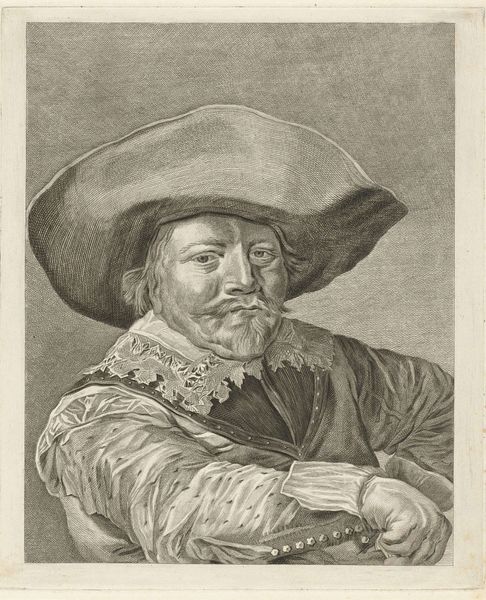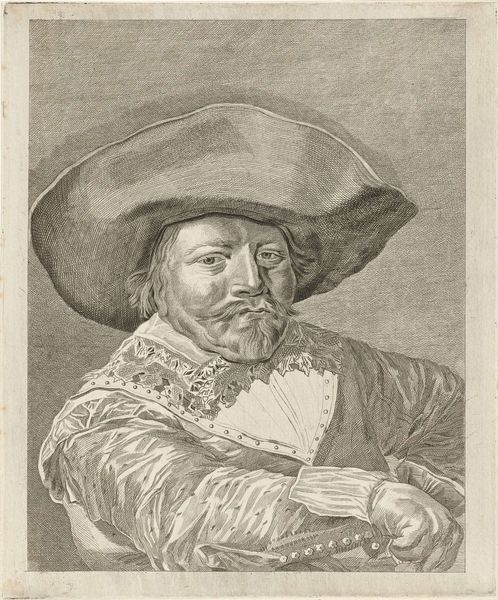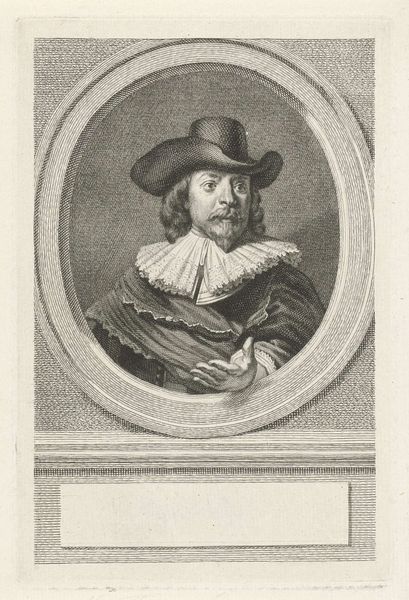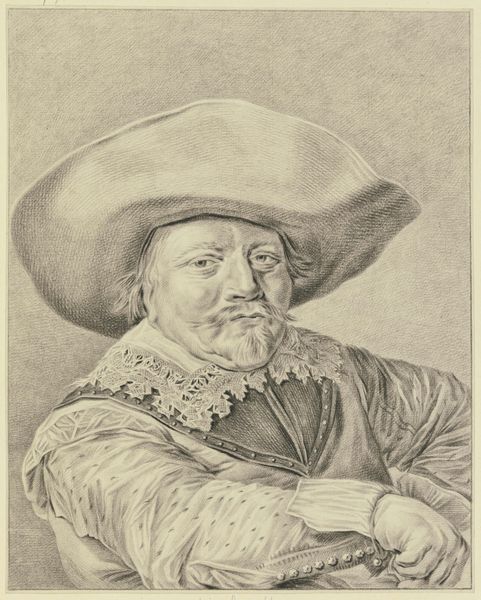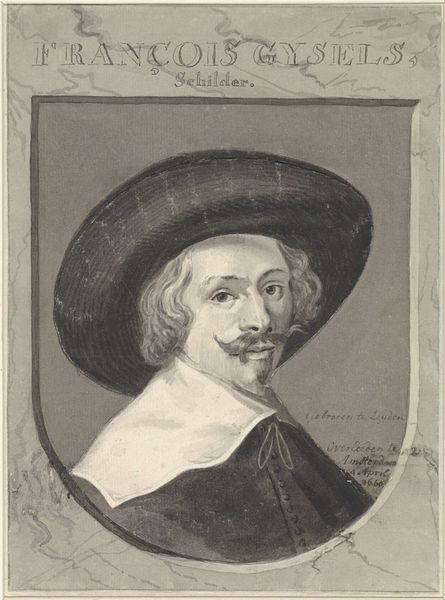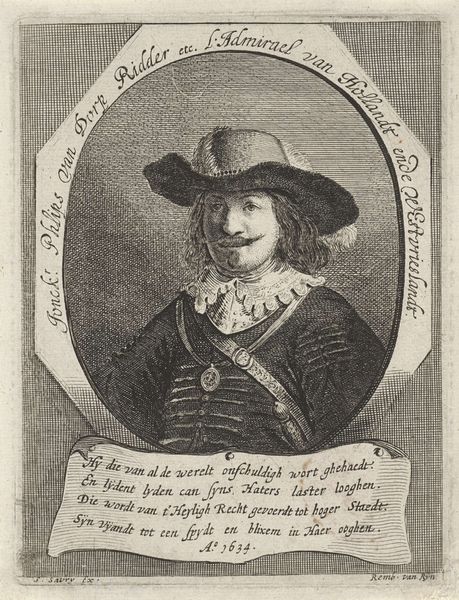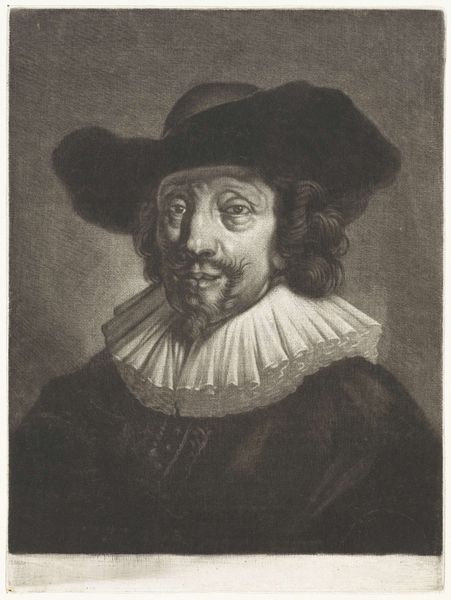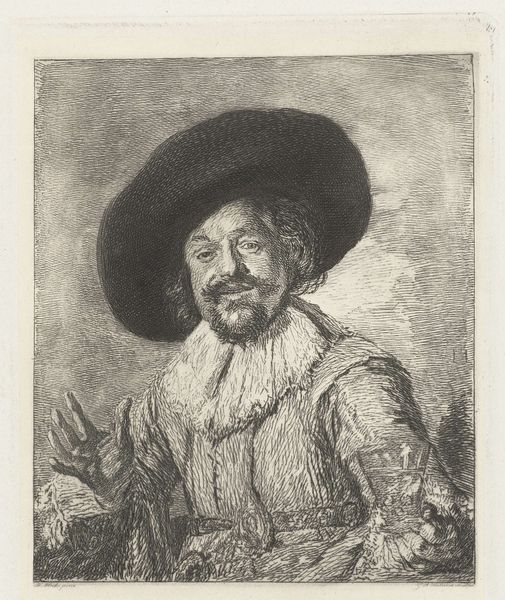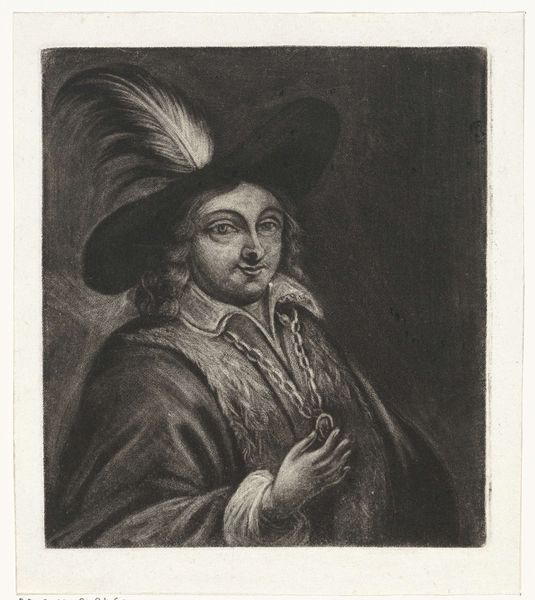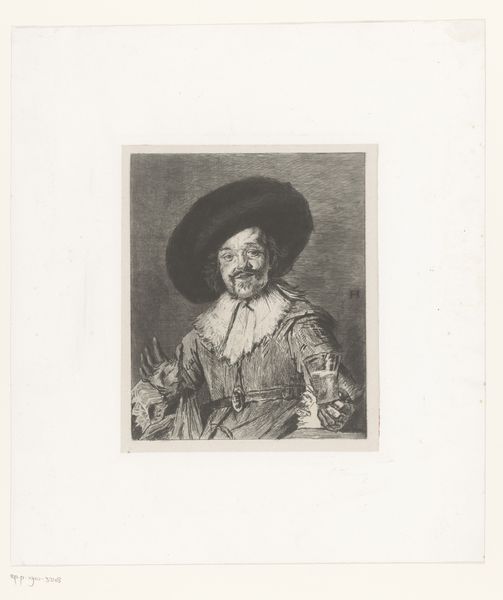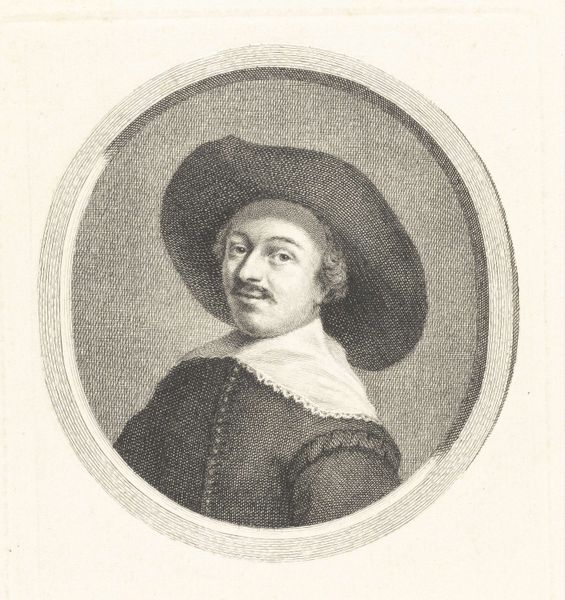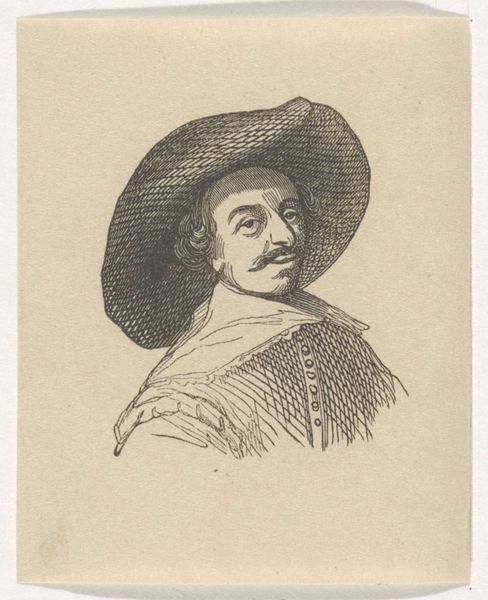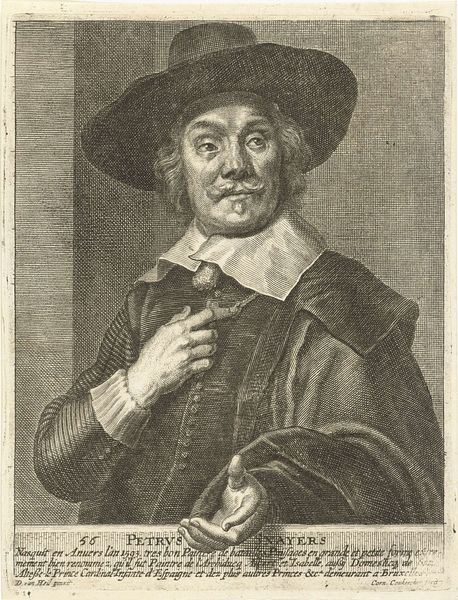
etching, ink
#
portrait
#
baroque
#
dutch-golden-age
#
etching
#
caricature
#
ink
#
portrait drawing
#
portrait art
Dimensions: height 158 mm, width 124 mm
Copyright: Rijks Museum: Open Domain
Editor: Here we have Aert Schouman's "Droevige man," made between 1720 and 1792. It's an etching, giving it this finely detailed, almost gritty quality. I’m really struck by the texture he achieves, especially in the rendering of the ruff and the man's hat. How does your perspective shed light on the production or cultural associations of this artwork? Curator: As a materialist, I see this etching primarily as an object produced within a specific network of resources and labor. Schouman's choice of etching as a medium immediately brings up questions of reproducibility and distribution. Who was the target audience for such prints? How would this image be circulated, and what economic factors governed that process? We can also ask: what social meanings do the specific details in this piece embody? The clothing, for instance, suggests certain class aspirations, but how might this be disrupted or reinforced by the caricature-like treatment of the subject? Editor: That's fascinating. So, it's less about the individual portrayed and more about what the object itself signifies within its societal context. Do you think the medium contributes to this "sad man’s" story? Curator: Absolutely. The very act of etching, a process demanding precision and skill, speaks to a specific kind of labor. Also, we might see the 'sad man' as a commodity himself, his likeness reproduced and sold within a developing market for images. Where did Schouman acquire his materials, and what were the working conditions like in his studio? This helps reorient our reading away from a sentimental focus on the subject’s apparent emotions and towards an investigation of the systems that produced him as a representational figure. Editor: This definitely gives me a lot to think about regarding art’s production and consumption in the 18th century! Curator: Exactly. It compels us to think critically about the artwork as more than just a visual representation; it's a product of its time, embedded in complex social, economic, and material realities.
Comments
No comments
Be the first to comment and join the conversation on the ultimate creative platform.
